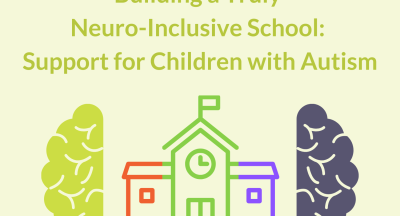
Last updated: 27th September 2024
Like most people I have been following the recent news stories about young people with autism and the PDA profile carefully. The first case to be highlighted was that of Bethany, a seventeen year old girl with autism and the PDA profile. From what I can gather, Bethany’s family had tried (unsuccessfully) for years to access the most appropriate support for her. By reaching out and acknowledging that they (and she) were struggling, the eventual outcome was that she was sectioned under the Mental Health Act, and has been detained in a number of hospitals ever since. In her current placement, she has spent an inordinate amount of time in a seclusion room, medicated and isolated from her peers, deprived of fresh air and her dignity (her observation levels do not even allow her bathroom privacy). Bethany’s case is sadly not the only one which I have personally come across in the course of my clinical work. There are many young people in similar circumstances across the country.
This raises the question of how do things ever get to the point of a young person needing to be detained in hospital, frequently with no real plan in place to move them back into the community.
The Victoria Derbyshire programme on BBC2 featured a number of young people who were all displaying behaviour that is both upsetting for them and their families, and could potentially lead to them suffering the same fate as Bethany. All of the families interviewed pointed to the lack of diagnostic assessments in the first place, and a complete absence of support for families and young people in need.
As someone who has had experience of working in both NHS diagnostic teams, and as a clinical psychologist in Tier 4 inpatient services, my aim with this article is to provide a (hopefully) balanced view of what the issues actually are within both of these environments.
The NHS team I originally worked in was set up late 2002, and commissioned to see between 40 and 60 young people per year. By the time I left in 2011, this number had increased to 360 referrals per year. The resources available (and consequently the size of the team of clinicians) had not increased by this amount, so we were always faced with a growing waiting list for assessment and the inability to offer anything more than assessment and diagnosis. Currently, waiting lists for assessments can be as long as five years in some areas. It is not easy to find appropriately trained and qualified clinicians, and diagnosing a child can be a long and time-consuming task if it is done properly – psychologists in particular are trained to ‘formulate’ a hypothesis, or reason, for a particular behaviour or presentation. This means that the clinician needs time to assimilate information from various sources, and to look at both risk and protective factors in that child’s environment. It is not good practice to rely on one or two assessment questionnaires, nor a brief meeting with a child and their family. The risk here is that either something will be missed, and the child will not receive an appropriate diagnosis, or that young people may be incorrectly given a diagnostic label which then shapes the way people manage them in the future.
Unfortunately though, without an assessment or diagnosis, families are often left in the wilderness with no support.
Unfortunately though, without an assessment or diagnosis, families are often left in the wilderness with no support. This can then lead to a crisis situation developing and parents reaching out to professionals who have no real understanding of the complexity of the issues facing many families. Admitting a child to inpatient services should be a last resort – a short term measure designed to keep them safe and to assess the young person. It was never designed as a long-term solution.
Given the nature of a support worker’s job, it can be hard for organisations to recruit and retain committed and appropriately experienced staff. This can, and often does, lead to an over-use of agency staff. Agency staff do not tend to know the patients as well as the regular care staff, and may not always have time to read care and support plans. Obviously for patients (both with and without Autism/Learning Difficulties) this can be unsettling, and often leads to more ‘incidents’ which may have been avoided had regular staff been on duty.
For some reason, it is also hard to recruit permanent Child and Adolescent Psychiatrists in some areas. This means that roles are often filled by locum Psychiatrists, who may be adult, not child and adolescent trained. Adult psychiatrists do not have specific training in autism. It also means that there are frequent changes in lead clinician, which can lead to disjointed care, and frequent changes in medication.
An ATU is not always the most appropriate environment for young people. Hospitals are unfamiliar and often too bright and too noisy. There is little privacy. Low secure units, where the perimeter is surrounded by a high fence can also be terrifying for the young person and make them feel as if they are in prison. In addition, they are often hundreds of miles away from their parents and friends. This makes visiting difficult, and also makes it almost impossible to carry out family work.
All behaviour is a form of communication.
My own personal opinion is that young people with autism and learning difficulties (including those with complex profiles like PDA) do not need a psychiatry-led medical service. There is a place for medication and support for mental health issues, but the majority of young people are better served by a multi-disciplinary approach – incorporating psychology, speech and language therapy, and occupational therapy. All behaviour is a form of communication. Therefore, a formulation approach, where possible causes for behaviour are examined and put into context, seems far more sensible.
Many young people, by the time they arrive in an ATU, will have had many years of trying to cope in an environment that they find difficult. Parents are often burned out and crying out for help. Early support is not always available, and many parents find themselves unfairly blamed for their child’s behaviour. Young people may go on to present with features of PTSD and even catatonia (where they simply switch off). Managing this distress by giving someone anti-psychotic medication merely damps down some of the anxiety and anger, it does not deal with the underlying cause or help them to recover from it.
There is often nowhere, and no team, for the young person to move on to when they are discharged from hospital as Local Authorities do not have either the resources or funding to make sure this happens. This leads to young people being kept in hospital for far longer than they actually need to be.
This helps no-one. These environments are not, and cannot be, truly therapeutic. I challenge anyone not to become stressed and start displaying ‘inappropriate behaviour’ if they are locked up 24 hrs per day, with no peace and quiet, and little or no privacy.
What is needed is far better support for parents and young people BEFORE situations reach crisis point. This means much better understanding of the ways in which autism presents, a timely assessment and diagnostic process and a better understanding of PTSD and trauma. Finally, there needs to be a stop to instant ‘parent blaming’ and a move towards a formulation-driven collaborative approach. It would also be helpful if the views of the autistic community were sought – maybe professionals need to engage in more talking with, rather than ‘doing to’, autistic individuals.
Related Posts
Autistic Burnout and Misdiagnosis: The Hidden Toll of Masking
14/07/2025
For many neurodivergent children and young people, navigating the social world...
The Problem Isn’t the Pupil, It’s the Scissors: Building a Truly Neuro-Inclusive School
01/07/2025
Discover how shifting our perspective from "fixing the pupil" to changing the...
Changing the scissors: A call for a truly neuro-inclusive world
21/07/2025
For too long, our collective approach to supporting neurodivergent children has...
It’s Not Only Girls Who Can Mask
30/11/2016
Following on from the previous article regarding autistic children who mask, this...







